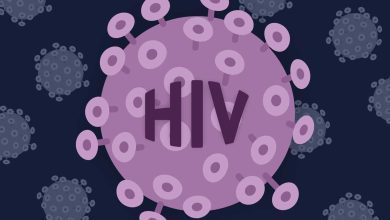
How can I relieve the Pain in Front of Neck?
Pain in the front of neck can be caused by a variety of factors. First, it is important to rule out potentially harmful causes, such as tumors, infections, and other problems, so having a professional examination is always a good idea.
General soft stretching combined with soft tissue massage can be very effective in reducing muscle tension and improving blood flow to the affected muscle. Better blood flow allows muscles to function better and can reduce pain. Of course, if you keep holding your head up, you have not really solved the problem! However, you may also feel pain on the left side of windpipe due to this condition.
How can you diagnose?
If necessary, the doctor will order further tests to determine the cause of the stiffness. Examples of such tests include:
- X-rays: These imaging tests can help identify issues with the bones and joints within the neck.
- CT scan or MRI scan: These detailed imaging tests can help reveal issues with bones and softer structures within the neck.
- Electromyography: This test involves using needles to stimulate different muscles, and measuring their electrical response. Doctors may use this test to assess the function of nerves in the neck.
- Blood tests: Certain tests may be necessary to assess thyroid function or to identify other inflammatory or infectious causes of tightness in the neck.
Some Causes of pain in front of the neck:
Here are a few causes of pain in front of the neck.
-
Whiplash
Whiplash, a soft tissue injury in the neck, is the result of a sudden jolt in the neck. These injuries usually occur after the car has been parked in the back. You do not need treatment. Your whiplash should improve during the week. In the meantime, you can take over-the-counter painkillers to control your pain. If your symptoms do not improve, you should see your primary care physician.
-
Viral infection of the larynx (voice box)
Laryngitis is an inflammation of the larynx or voice box. This causes the vocal cords to swell and lead to hoarse, noisy sounds. Infections, such as the common cold or flu, are almost always the cause of laryngitis. These infections are spread by touch, such as when a person sneezes and droplets are inhaled into the air.
At high risk are people whose immune systems are already weakened due to illness, medication or chemotherapy. Symptoms include diarrhea; sore throat, anger; difficulty speaking; cough; and sometimes fever.
-
Retropharyngeal abscess
The retropharyngeal abscess is a reddish tinge to the muscles in the back of the throat. It is a health condition that can be dangerous.
This is a medical emergency. Please seek emergency help from your nearest Emergency Department today. Diagnosis is made by imaging. Treatment with rapid surgical flow fluids and antibiotics.
-
Premature ventricular contraction
Premature ventricular contraction (PVCs) is an additional, irregular heartbeat that begins in one of the two lower chambers of the heart (ventricles). These extra rhythms disrupt the normal rhythm of the heart, sometimes causing a feeling of jumping in your chest.
If you are a healthy person otherwise, there is usually no reason to worry as PVCs themselves are harmless. However, a heartbeat may be difficult to diagnose with a lower heart problem, so it is recommended that you visit a doctor today to have an EKG.
-
Neck sprain
A neck fracture sometimes called a “whiplash,” means that the lines – the straps, the fibrous straps that connect the bones together – of the neck are torn or stretched. It is caused by a sudden impact that suddenly causes the head to bend and forward, often as a result of a car accident or a quick ride to a recreational park. Sports injuries can force the neck to overuse, breaking the ligaments.
-
Inflammation of the epiglottis
Epiglottitis is an inflammation of the epiglottis, the tissue that closes the trachea (trachea), which helps to prevent coughing or congestion after swallowing. It is usually caused by the bacterium H. Influenzae but can also be caused by other germs or viruses that cause upper respiratory infections.
-
Head and neck cancer
There are five main types of head and neck cancer, all named after the body part where they grow: laryngeal (voice box), nose and sinus, nasopharyngeal (airway after nose), oral (mouth), and salivary cancer. Most of these cancers are squamous cell carcinomas (SCCs), which begin in the squamous cells that form the thin layer of structures in the head and neck.
How can I relieve pain In front of my neck?
You can relieve your pain in front of the neck by the following steps.
-
Injection-based treatment
Nerve blocks, epidural steroid injections, nerve implants, and other types of injection-based procedures are available for chronic back pain. They are used when the source of the pain is known and can sometimes help to eliminate certain causes if treatment does not work. Injections may stop or reduce pain for a while, but they are not intended as long-term solutions and should not be used alone.
-
Lighten your load
Backpacks are everywhere – at school, at work, at play. But an overcrowded backpack can be a sign of back pain.
If you use a backpack, you can take precautionary measures. First, use both pocket straps instead of one shoulder strap. Try to carry only the essentials, and lighten your load whenever possible. Choose backpacks with compounds of different sizes to help distribute the weight evenly. And look at the wide, padded straps and the back cover. When carrying a heavy load, place the heavy objects as close as possible to the center of the back, and use the hip strap for support. For heavy loads, use a backpack. Above all, remember to bend your knees when picking up your pocket.
-
Develop healthy habits
Everyday activities, from cleaning your house to sitting in front of a computer for many hours, can take your back, especially if you have not learned about proper body mechanics. But you can relieve stress by following these simple tips:
- While standing to do chores such as ironing or folding clothes, keep one foot in a small chair.
- Do not sit or stand in the same place for long periods. Stretch, change your location, or take a short walk where you can.
- When bending at the waist, use your hands to support yourself.
- When sitting, keep your knees slightly higher than your hips and bend them at an angle of 90 degrees. Sit with your feet comfortably on the floor. If your feet do not reach the floor, place a book or small chair under them.
- Because cleaning may interfere with your back, repair the rooms in sections, and do not spend more than five to 10 minutes during the exercise.
-
Ice and heat
Regular use of ice on painful areas in your back can help reduce the pain and inflammation of an injury. Try this a few times a day for up to 20 minutes each time. Rub a packet of ice with a small towel to protect your skin. After a few days, switch to temperature. Apply a heater or warm pack to relax your muscles and increase blood flow to the affected area. And you can try a warm bath to help you relax. To avoid burns and tissue damage, never sleep in a warm place.
-
Biofeedback
Biofeedback uses a special machine that helps you train your brain to control your response to pain. You learn to moderate your breathing, heart rate, blood flow, and muscle tension. Some studies have found that it is better than medication in easing back pain, reducing pain intensity by about 30%. However, The best part: it has no side effects.






